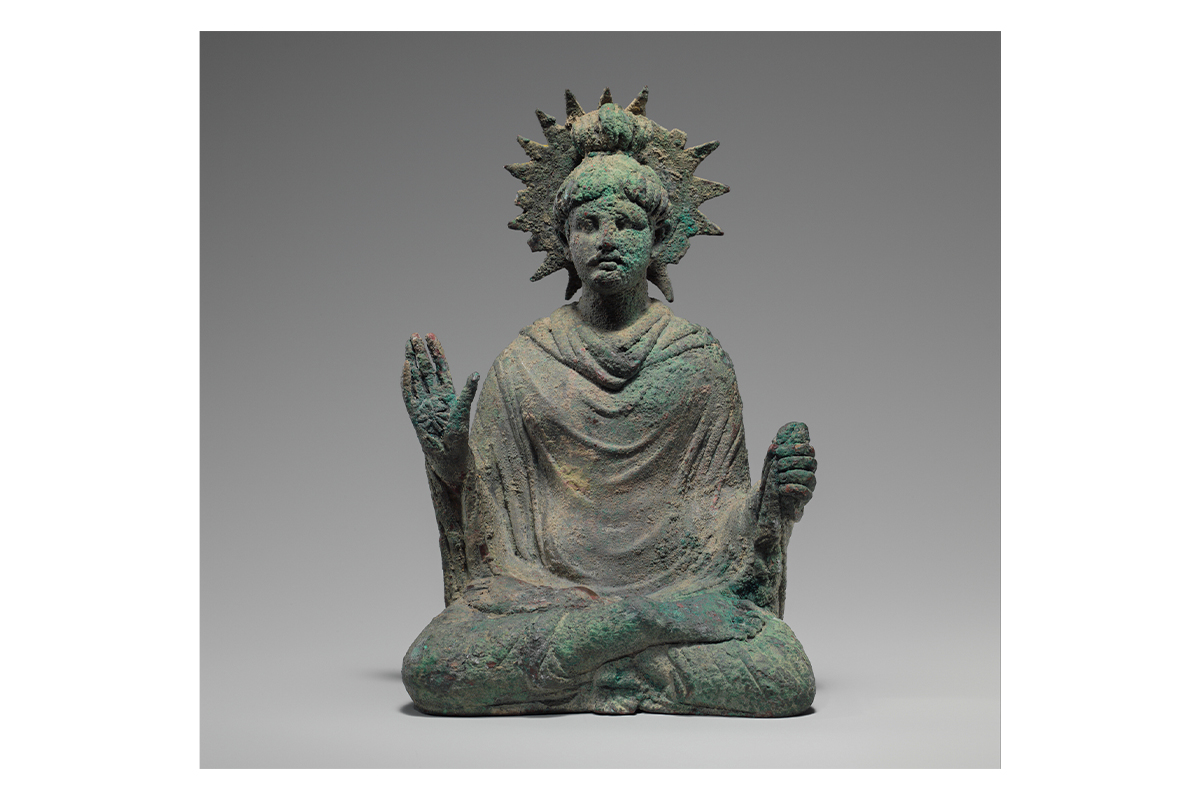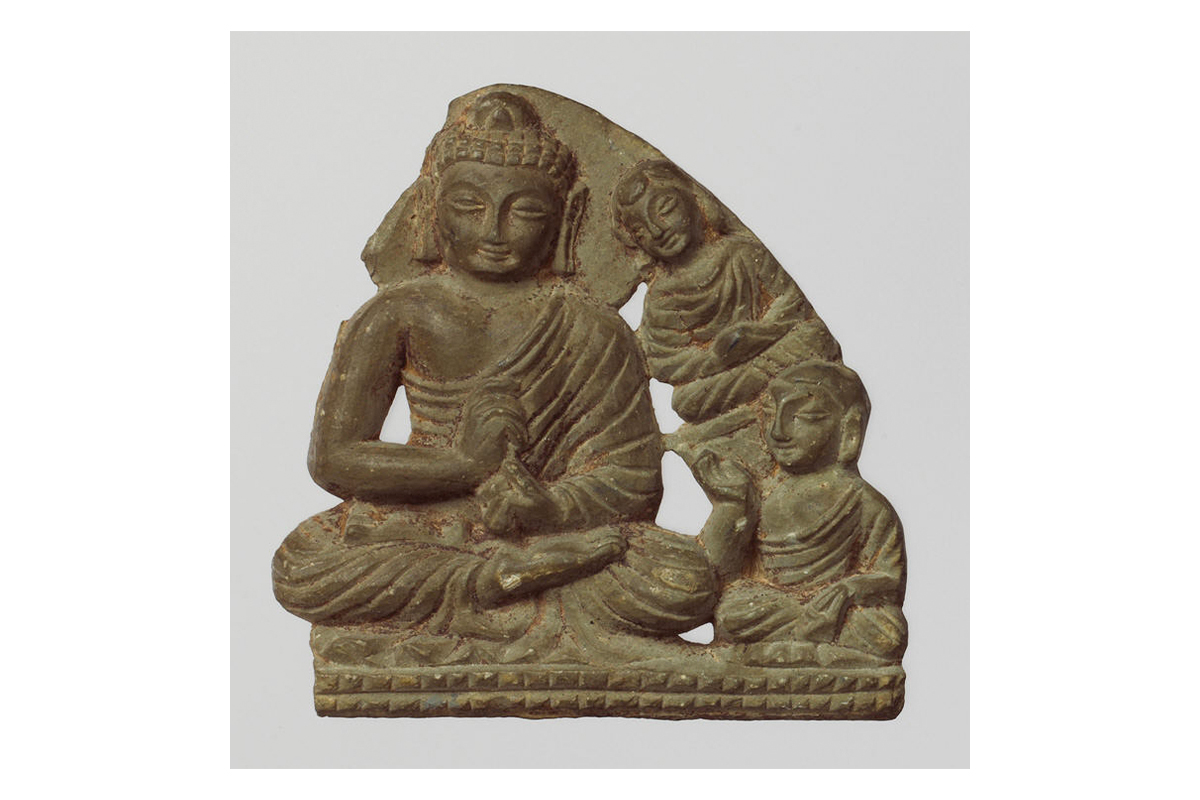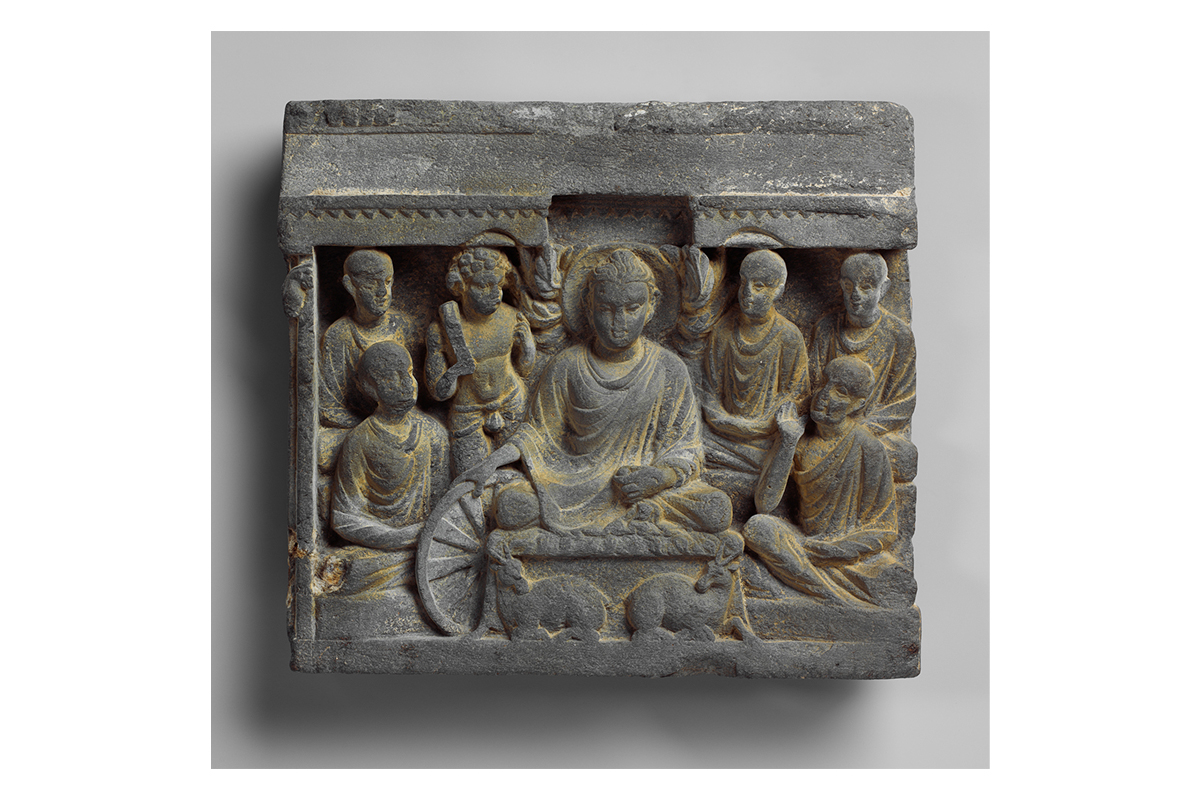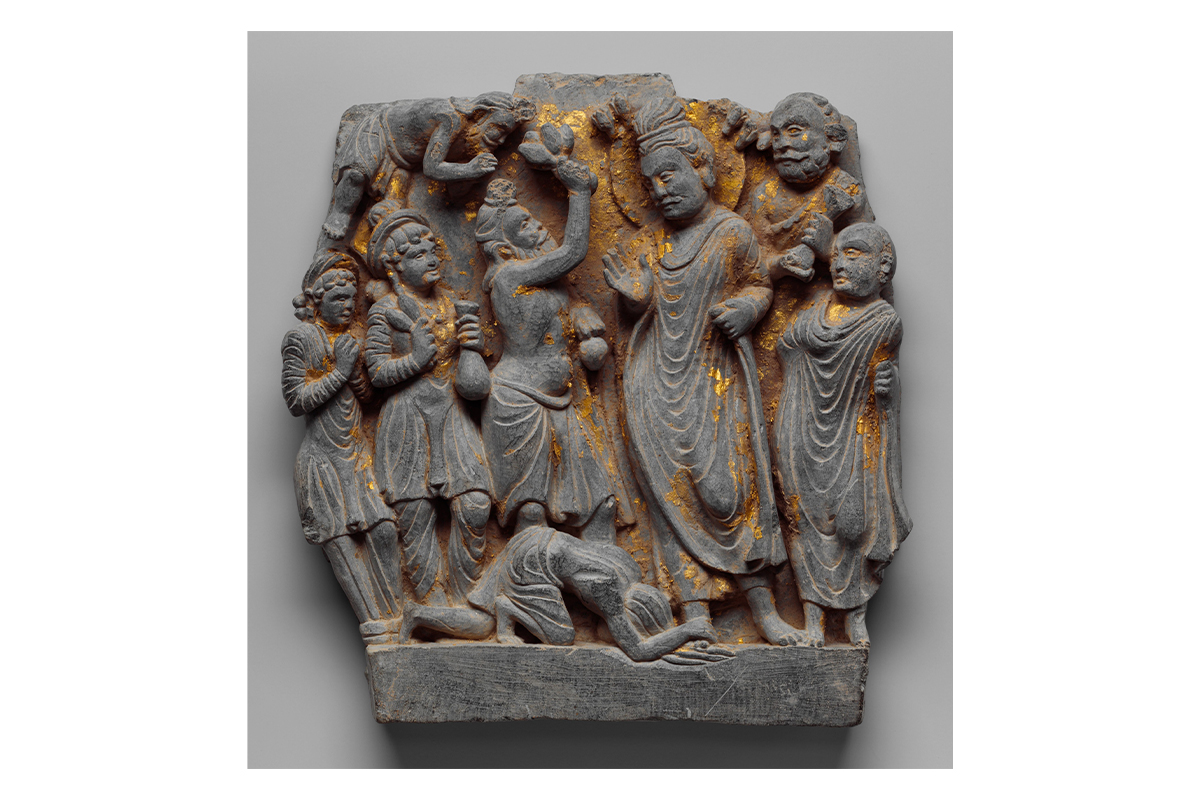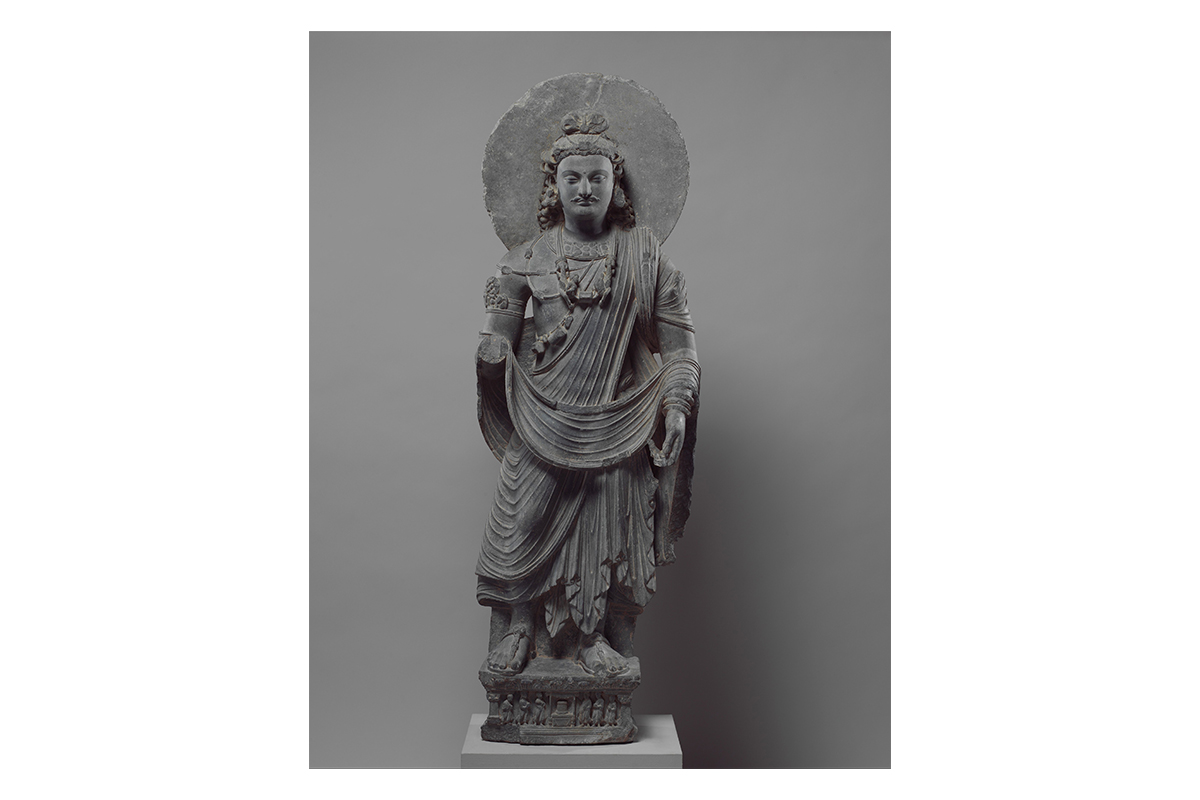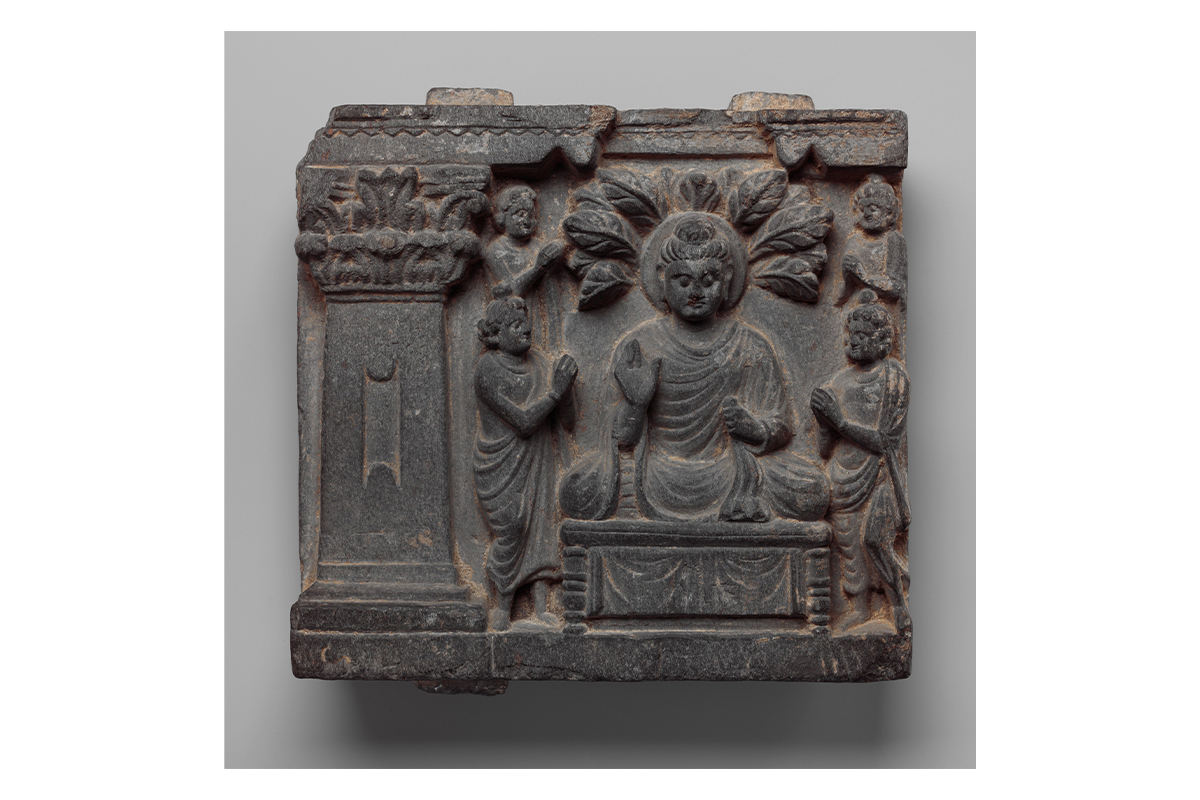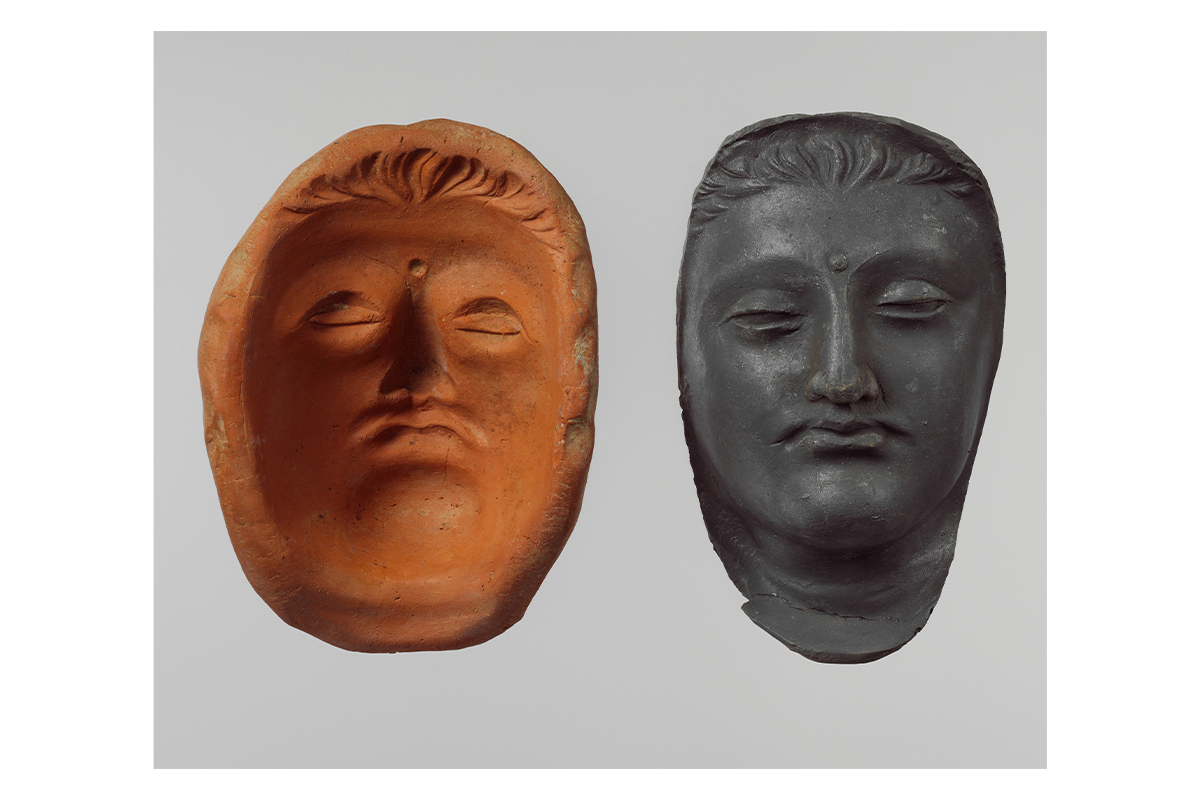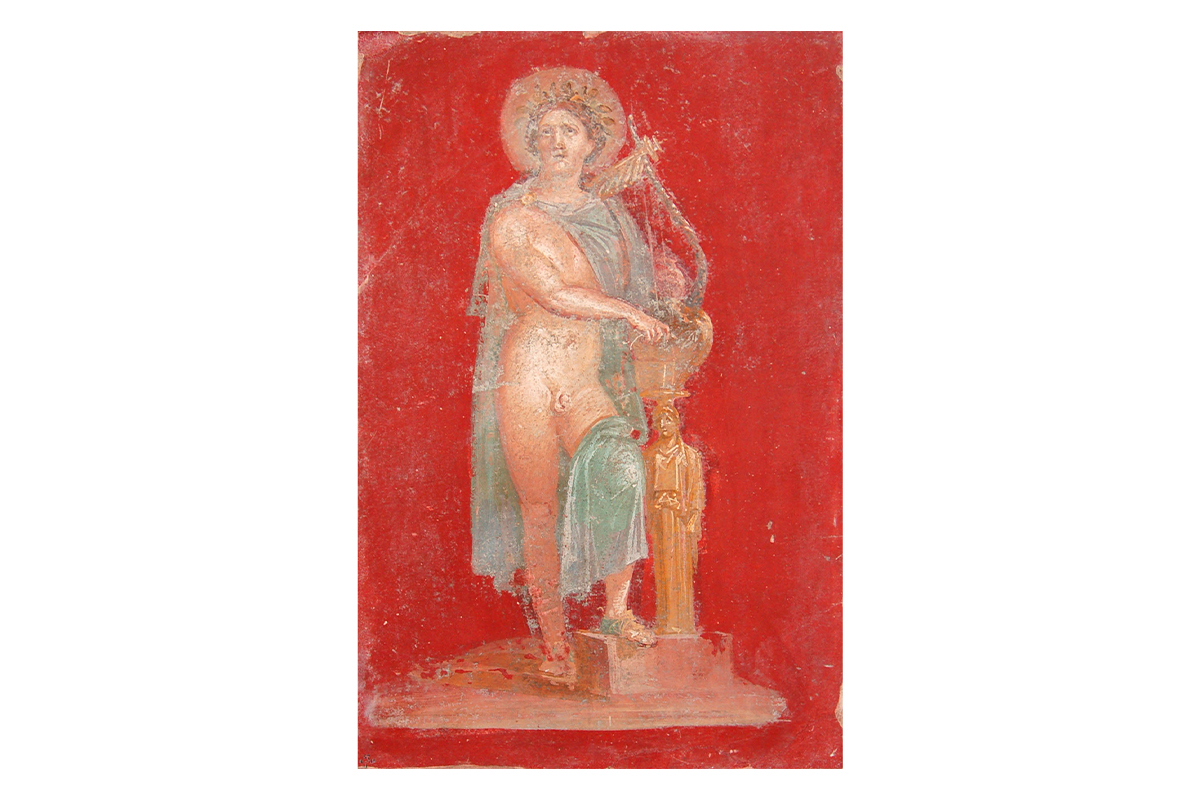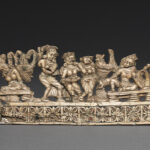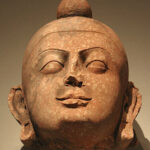Anthropomorphic Representations of the Buddha Emerge
60–100 CE
The first anthropomorphic representations of the Buddha are created in Gandhara (in present-day Afghanistan and Pakistan), with the earliest surviving example being the Bimaran reliquary. Like many images and symbols that become ubiquitous in the subcontinent due to their sociopolitical importance, the Gandhara Buddha is a mix of indigenous and external influences: the Apollonian halo; the muscular build and long, heavy robes characteristic of Greco-Roman art; and the soft facial features, the padmasana (cross-legged) position and his various mudras (gestures) derived from Buddhist scripture and styles. These features are the result of the region’s status as a geopolitical crossroads as well as renewed connections with the Mediterranean world dominated by the Roman empire. The Gandhara Buddha will become the foundation for all future representations of the Buddha across Asia.
Bibliography
Behrendt, Kurt A. The Art of Gandhara in the Metropolitan Museum of Art. New York: Metropolitan Museum of Art, 2007.
Dehejia, Vidya. Indian Art. New York: Phaidon Press, 2012.
Huntington, Susan L., and John C. Huntington. The Art of Ancient India: Buddhist, Hindu, Jain. New York: Weather Hill, 1985.
Shaw, Sarah. Buddhist Meditation: An Anthology of Texts from the Pāli Canon. London: Routledge, 2006.
Singh, Upinder. A History of Ancient and Early Medieval India: From the Stone Age to the 12th Century. New Delhi: Pearson, 2008.
Feedback 
This entry appears in
Art in South Asia
Visit Timeline
Associated Timeline Events
First Published: March 11, 2024
Last Updated: August 5, 2024




